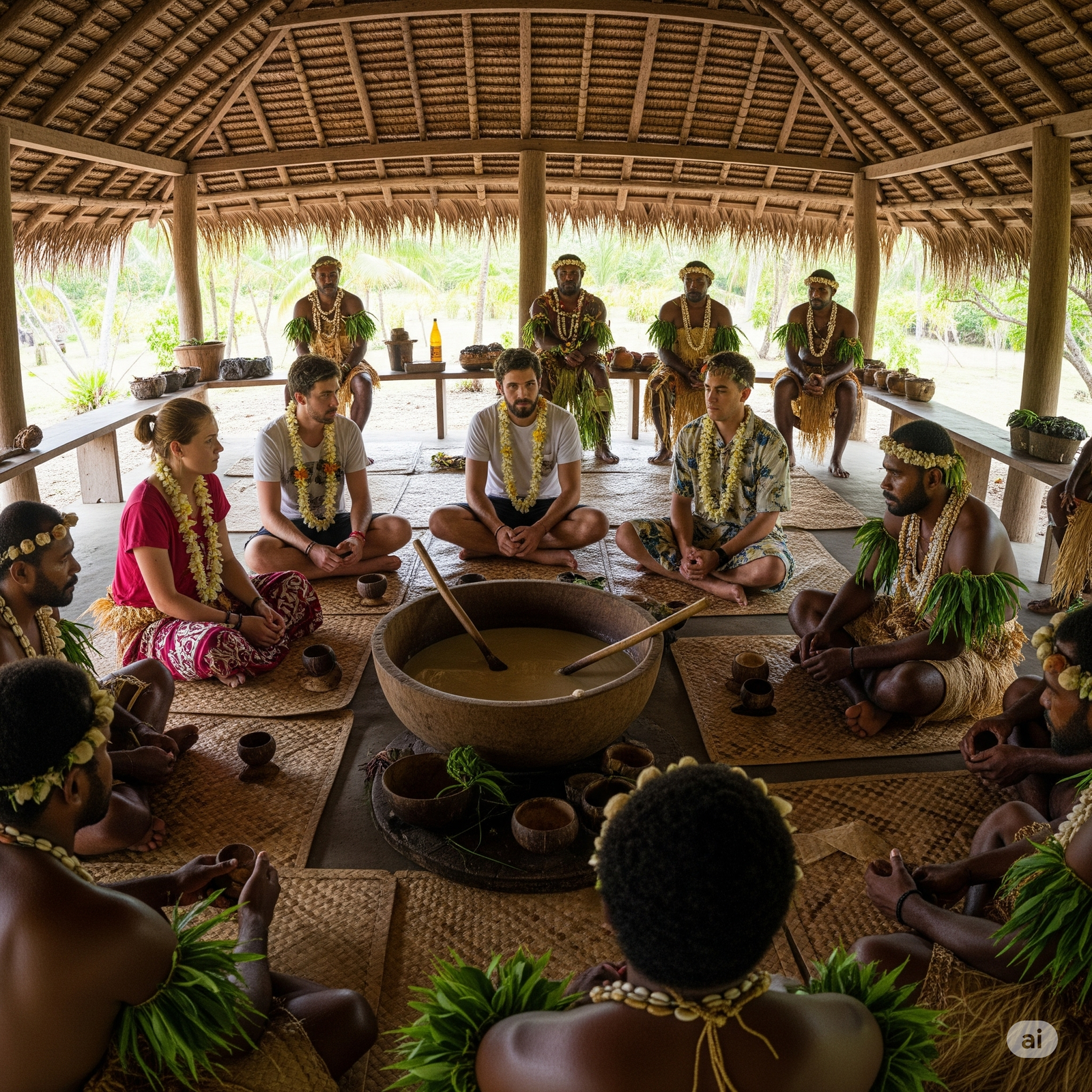Beyond the shimmering turquoise waters, volcanic peaks, and verdant jungles, Vanuatu holds a treasure even more profound: its incredibly diverse and vibrant human culture. With over 100 distinct indigenous languages spoken across its 80-plus islands (making it one of the most linguistically diverse places on Earth per capita), Vanuatu is a living mosaic of traditions, customs, and ancient ways of life that continue to thrive in 2025.
For any visitor to Vanuatu, truly “meeting the locals” isn’t just about exchanging pleasantries; it’s an opportunity to witness and respectfully engage with unique cultures that have largely resisted the homogenizing forces of globalization.
A Kaleidoscope of Kastom: The Heart of Vanuatu
The word you’ll hear most often is Kastom. This isn’t just “custom” in the Western sense; it’s a profound concept encompassing traditional laws, beliefs, rituals, art, dance, and social structures passed down through generations. Kastom defines identity, regulates community life, and connects people to their land and ancestors.
Each island, and often different regions within a single island, has its own distinct Kastom, making Vanuatu a fascinating place of discovery.
Key Aspects of Vanuatu’s Diverse Cultures:
- Linguistic Diversity: The sheer number of languages is astounding. While Bislama (a creole based on English, French, and local languages) is the national lingua franca, venturing to different islands means encountering completely different mother tongues and communication styles. This linguistic richness reflects deep-seated cultural differences.
- Traditional Villages (Kastom Villages): Many communities, especially in the central and northern islands, consciously preserve their traditional way of life.
- Architecture: Houses are often built from local, sustainable materials like bamboo, sago palm leaves, and wild cane.
- Governance: Village life is often governed by a council of chiefs (Naflak in Bislama), whose authority is deeply rooted in Kastom.
- Subsistence Living: Many communities practice subsistence farming, living off the land and sea, maintaining a strong connection to their environment.
- Kastom Ceremonies and Dances: Participating in or witnessing a Kastom ceremony is an unforgettable experience. These can range from daily rituals to elaborate celebrations marking harvests, initiations, or important social events.
- Naghol (Land Diving) on Pentecost: The awe-inspiring ritual of land diving, performed annually between April and June, is a powerful example of living Kastom.
- Rom Dance on Ambrym: Known for its striking, towering masks and intricate choreography, often associated with spiritual rituals and graded societies.
- Fan Dances, Pig Killings, and Feasts: Many ceremonies involve intricate dances, the ritualistic slaughter of pigs (especially tusker pigs, which are highly valued and symbolize wealth and status), and communal feasts.
- Art and Craftsmanship: Vanuatu’s cultural richness is also expressed through its traditional arts.
- Wood Carving: Intricate carvings of ancestral figures, ritual objects, and masks.
- Sand Drawing (UNESCO Heritage): On certain islands like Ambae, the ancient art of sand drawing, where complex geometric patterns are drawn in the sand in a single, continuous line, is a unique form of storytelling and communication.
- Nose Flutes, Tamtams (Slit Gongs): Traditional musical instruments play a vital role in ceremonies and storytelling.
- Grades Societies (e.g., in North Ambrym and Malekula): These are complex social structures where men can achieve higher status by going through a series of expensive rituals involving pig sacrifices and feasting. This system reinforces social hierarchy and traditional values.
Meeting the Locals: Tips for Respectful Engagement
Vanuatuans are renowned for their warmth and friendliness, but respectful engagement is key to a meaningful cultural experience:
- Hire a Local Guide: This is paramount. Local guides facilitate meaningful interactions, navigate cultural nuances, and ensure you respect local customs. They also ensure your visit directly benefits the community.
- Ask for Permission: Always ask before taking photos of people or entering private land/villages.
- Dress Modestly: Especially in Kastom villages, dress respectfully. Women should ideally cover their knees and shoulders.
- Be Patient and Open-Minded: Things move at “island time.” Embrace the slower pace and be open to learning about beliefs and practices that may differ greatly from your own.
- Understand the Value of Gifts/Donations: If visiting a village for a cultural tour, a customary payment (often pre-arranged by your tour operator or guide) is expected and goes directly to the community.
- Learn a Few Bislama Phrases: Even a simple “Halo” (hello), “Tank yu tumas” (thank you very much), and “Ale” (okay/goodbye) will go a long way.
Meeting the people of Vanuatu and understanding their unique Kastom is perhaps the most enriching aspect of any trip to this remarkable nation. It’s a journey not just through stunning landscapes, but into the enduring heart of human tradition.


Leave a Reply